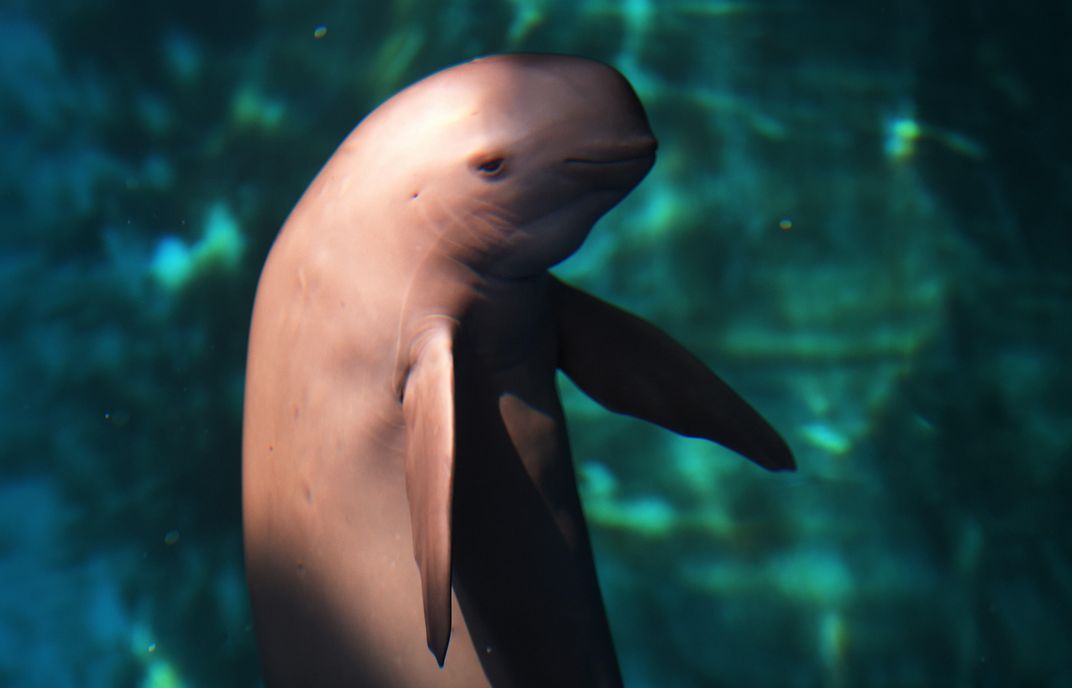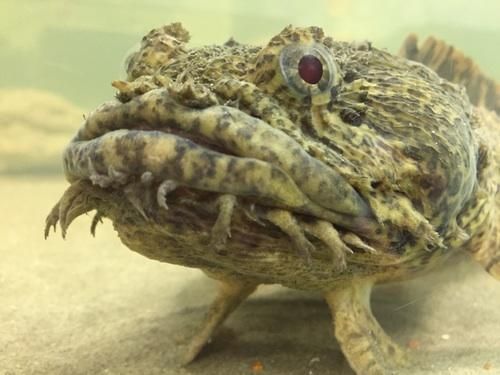How Scientists Use Teeny Bits of Leftover DNA to Solve Wildlife Mysteries
Environmental DNA helps biologists track rare, elusive species. It could usher in a revolution for conservation biology
/https://tf-cmsv2-smithsonianmag-media.s3.amazonaws.com/filer/58/36/583647b9-d11d-4f03-bd0b-0303b18e4a89/istock-588389510_2.jpg)
Neil Gemmell has a secret plan for finding the whereabouts of Nessie the Loch Ness Monster.
No, really, he’s thought this through. If there is something large and strange living in the Loch, it would be casting off cells full of DNA like anything else. Probably a lot of it. And even though we don’t have any dino-DNA in the reference library to check samples against, Gemmell, a professor of genomics at the University of Otago in New Zealand, says we know enough about what it should look like to tell whether there’s a plesiosaur living in present-day Scotland.
All you need, then, is a way to determine whether there’s any plesiosaur DNA floating around in those watery depths. Enter eDNA. No, it isn’t the electronic version of DNA. In the simplest terms, eDNA is what scientists call any genetic material acquired from the environment rather than the creature itself. And while eDNA can technically be found hiding out in soil or air, water is a particularly handy medium because it can be so easily collected, strained and reduced.
Scoop a glass of water out of your backyard stream and hold it up to the light. Those muddy, swirling waters are full of invisible traces of life. From the dinky goldfish pond at the mall to the waves lapping at the seashore, every body of water is a slurry of sloughed-off cells. What’s more, scientists have recently devised methods by which they can sift out the DNA sequences in that slurry to differentiate between a blue crab, a blue whale or even a Loch Ness Monster—without ever laying an eye on the animal itself.
To be abundantly clear, Gemmell isn’t betting on the possibility of finding a plesiosaur in Loch Ness. But he is willing to make a wager on the power of eDNA to help us devise new conservation strategies, and even solve some of the most persistent ecological mysteries of our time.
The potential of this technique is vast: In Croatia, scientists are using it to search caves for a blind, colorless aquatic salamander known as the cave dragon, or olm. In the American Southeast, eDNA is telling us how much giant, secretive amphibians known as hellbenders have declined across their historical range. In Asia, researchers just proved that eDNA can also be employed to study jellyfish like the Japanese sea nettle. And in Australia, scientists have found that similar assays can be used to study spawning activity in the endangered Macquarie perch.
“I really don’t want to become known as the guy who is looking for the Loch Ness Monster,” Gemmell says. “But I do think it’s a great hook to get people talking about eDNA.”

To give you an idea of what eDNA looks like, imagine you’re making bread and you’ve just scattered a bunch of flour across the counter. After you knead the loaf for a while, that little bit of dust that’s left over? That’s basically what he can extract from a liter of water taken out of the Hudson River, says Mark Stoeckle, senior research associate at Rockefeller University’s Program for the Human Environment. Only eDNA isn’t bleached white. It’s muck-brown.
And for animals that aren’t as hypothetical as Nellie, that muck-brown material holds real promise. Look across the scientific literature and you’ll find that eDNA is already being used all over the world to better understand the behavior and population dynamics of critical species.
One example is the Yangtze finless porpoise, a notoriously difficult subject to study. For starters, there are fewer than 1,050 animals left in existence, earning the species a critically endangered status by the International Union for Conservation of Nature. What’s more, the porpoises (as their name suggests) lack a dorsal fin, which means they barely break the surface when coming up to breathe, and their skin is the same dark gray hue as the waters they inhabit.
“I can honestly say I’ve never seen one in the wild,” says Kathryn Stewart, a biologist at the University of Amsterdam’s Institute for Biodiversity and Ecosystem Dynamics. But thanks to eDNA, that doesn’t stop Stewart from studying this cryptic species. “By utilizing eDNA, we are able to cut the cost and time needed for comprehensive and accurate sampling, which is always a concern for conservation work, particularly in developing countries where prioritization and money are often low,” she says.
Ultimately, the goal is to figure out what factors are contributing most to the porpoise’s decline—and quickly. According to the IUCN, the species is at an “extremely high” risk of extinction within just the next three generations." Dams, gill nets and increased boat traffic all seem like good bets, but given how hard the animals are to track, it’s nigh impossible to figure out where the species’ last holdouts are and what makes these areas more habitable than the vast stretches of river where the marine mammals used to thrive.
Now, Stewart is working towards developing ways for eDNA to not only reveal whether a species is present or absent, but how abundant that species might be in a given stretch of water. These results could then be correlated with other information—the presence of certain prey species, for instance, or proximity to areas dense with human habitation—to determine what conditions the Yangtze finless porpoise can best tolerate.
“Obviously there's a lot of pain-staking work that goes into optimizing eDNA techniques for different species and environments,” says Stewart, “but for the most part, it's a huge step forward—a revolution if you will—for conservation biology.”

DNA is a molecule of contrasts. In some ways, it’s impressively hardy, surviving hundreds of thousands of years entombed in solid rock or the near-boiling temperatures found beside deep-sea hydrothermal vents (though no, Jurassic Park fans, it probably can’t survive in amber-encased insects for millions of years). In other ways, it’s extremely fragile: DNA can also be broken down by sunlight, water turbulence and certain chemicals.
But when you get right down to it, which quality wins out?
That’s the question Rockefeller University’s Stoeckle and his colleagues set out to answer last year. The team spent six months collecting weekly water samples from two of New York City’s rivers to see what the eDNA within could tell us about the fish species who live there. The Big Apple may not strike most as one of the most pristine or colorful aquatic habitats on Earth, but Stoeckle says the confluence of all that freshwater and saltwater makes for a particularly interesting, and challenging, study area for eDNA testing.
Stoeckle wanted to know: Is DNA so robust that sampling a harbor would return a dizzying array of species from mountain headwaters and riverbanks to coastal estuaries, the open ocean, and the deep sea? Or was DNA so fragile that it disappeared or degraded before we could collect it an analyze it? As it turns out, the answer lies in between.
“Not only did we find the right kinds of fish, but we found them at the right time,” says Stoeckle. “In winter, when the fishermen will tell you it’s not worth putting a line in the water, we get very little or no fish eDNA. Then, starting in April and May, we get a steadily increasing recovery of fish DNA until about the middle of summer when you get 10 to 15 species in an average sample.”
In other words, Stoeckle’s findings, published in the journal PLOSONE this April, reaffirmed what we already knew about fish migrations in New York’s harbors: for example, that black sea bass move offshore in the winter and return to the harbor in the spring.
And that’s crucial. While the study probably would have gotten a lot more headlines had they found alligator DNA seeping out of the sewers (or Nessie!), these results are far more important because they are expected. That’s because eDNA is still a relatively new tool, and if it’s going to be taken seriously, it needs to be calibrated against the reliable data collected from the methods it might one day replace.
But perhaps the greatest promise offered by eDNA? The potential for scientists to conduct crazy-cool science at a crazy-cheap price point.

Most of what we know about fish migrations comes from dropping tons of nets and picking through what comes up, or using solar pings to create a snapshot of what’s going on below. In smaller streams and rivers, scientists can use electrified wands to stun fish and other aquatic creatures, allowing them to conduct relatively thorough surveys of even the sneakiest creatures. But all of these methods require two things in great quantity: time and money.
“Everybody who does surveys of marine life would like to increase the frequency and density of sampling,” says Jesse Ausubel, one of the founders and leaders of the Census of Marine Life. But Ausubel says it can cost between $10,000 and $150,000 a day to rent a ship, which severely limits how many times scientists can afford to drop their nets or turn their sonar devices on.
“The result is there are huge gaps in what we know,” says Ausubel, who is also director of Rockefeller University’s Program for the Human Environment, where he leads the group Stoeckle is part of.
Fortunately, recent advances in DNA sequencing technology have brought the costs associated with eDNA assays down to roughly $50 a sample. This means that scientists can gather samples and conduct surveys much more frequently than they’d be able to afford using traditional monitoring methods. And unlike identifying a species based on its physical traits—a tricky skill that requires loads of experience and can still produce false data—eDNA samples can be gathered up relatively easily by anyone with a little bit of a training and a sterile container.
Finally, unlike trawling, sonar, or electrofishing, eDNA sampling is virtually impact-less. This makes the technique particularly appealing for surveying species that are already on the ropes. For Stewart, this is one of the best things about using eDNA: It allows her to ask questions about the Yangtze porpoises without adding even more boat traffic to their habitats.
Stewart points out that eDNA might be especially important for developing countries, because they often have high levels of endemism and heightened risk for species loss while also having fewer resources to invest in conservation. “Though we want to protect as much biodiversity as possible, the reality is that we need to make tough decisions about where and how to fund conservation,” she says. And with eDNA, we can make those limited funds go even farther.
Moreover, beyond conserving known animals, eDNA could also help biologists uncover hidden species swimming under our noses. David Lodge, a biologist at Cornell University and director of the Atkinson Center for a Sustainable Future, points to the potential of using this technique in ecosystems like Africa’s massive yet little-searched Lake Tanganyika. While researchers know the lake is teeming with various cichlid fishes, there are likely far more species still undiscovered.
"We believe that we will be uncovering dark diversity—species out there that have never been described," Lodge said during Smithsonian’s Earth Optimism summit, a gathering of conservation-minded citizens, scientists and activists, earlier this month.

Meanwhile, those like Gemmell are generating interest in the idea. Gemmell says that after a few Tweets about using eDNA to look for Nessie, he’s had more interest in the real eDNA work he does in New Zealand in the last two weeks than he’s seen in two years of dutifully collecting and testing water samples.
That real eDNA work, by the way, involves using eDNA to detect invasive seaweeds and tunicates before they can take hold in New Zealand’s waterways. Right now, we really only become aware of such creatures once they’ve taken hold. But if routine eDNA testing of waterways revealed the presence of such creatures early enough, we might be able to go on the offensive, rooting out invasions almost before they begin.
Unfortunately, the Scottish monster hunt will likely have to wait until somebody wants to cough up some funding. But Stoeckle says he loves the idea, and doesn’t see any technical limitation for why it wouldn’t work. “The only problem,” says Stoeckle, “is whether the Loch Ness Monster actually exists.”
And if she doesn’t? That’s a problem even eDNA-wielding scientists can’t solve.